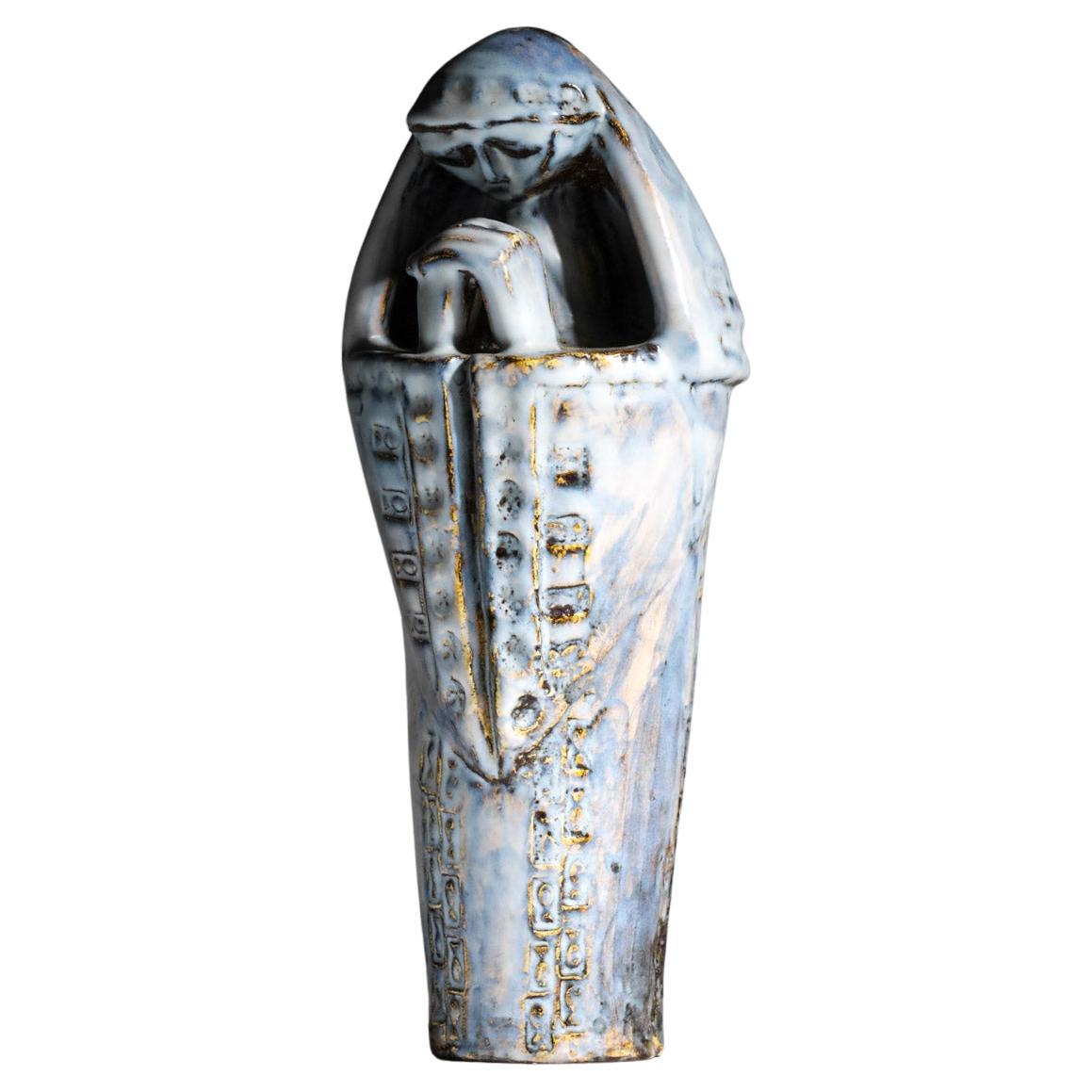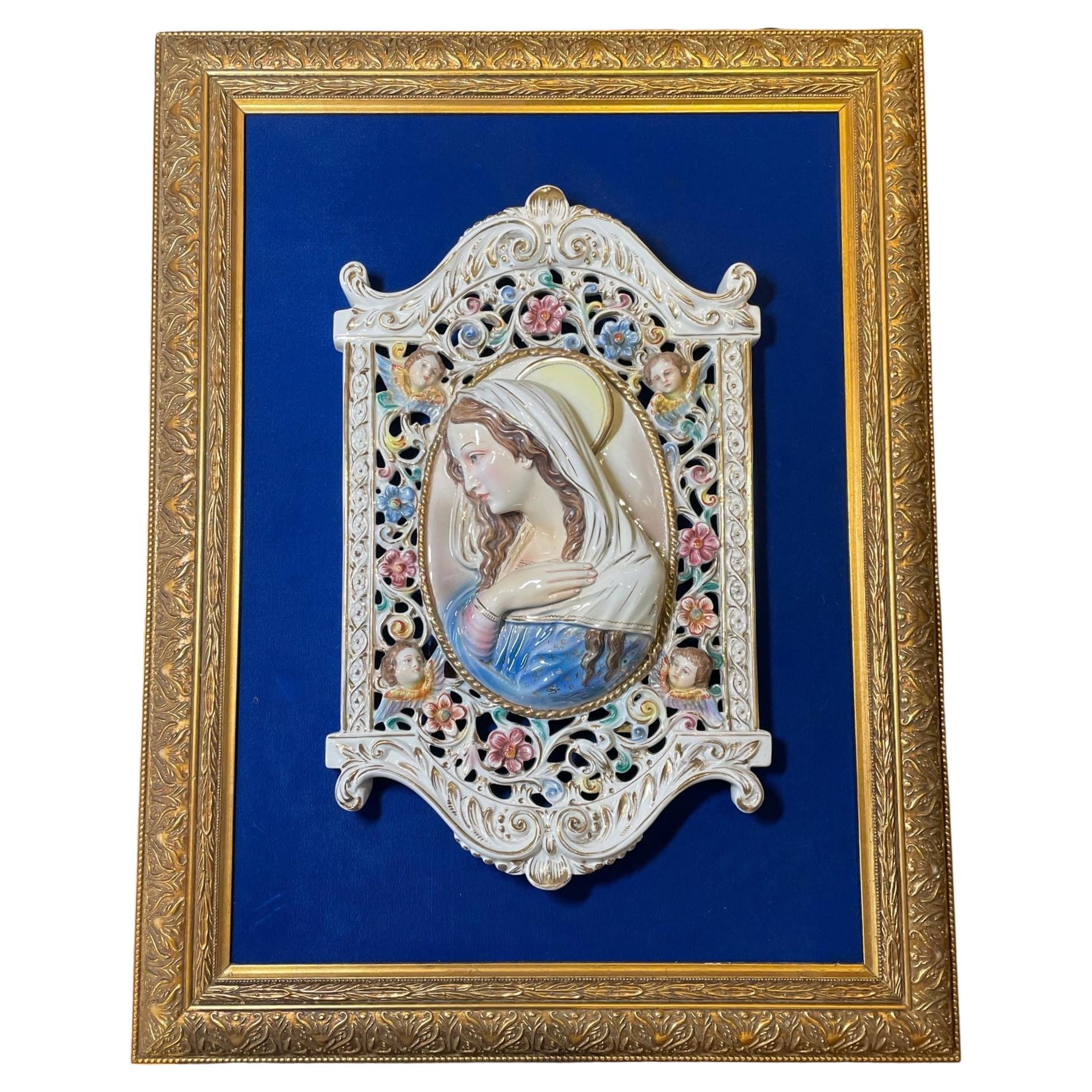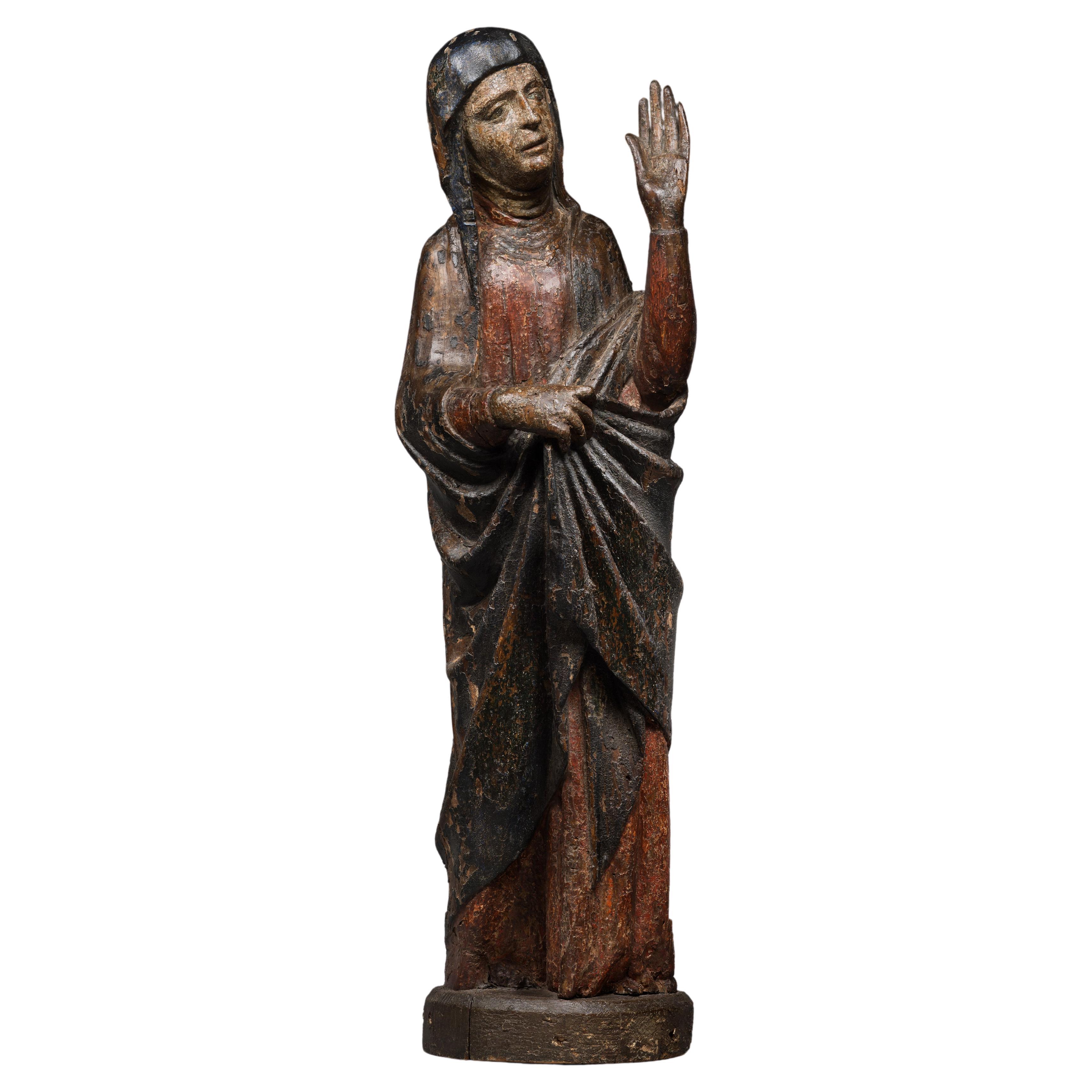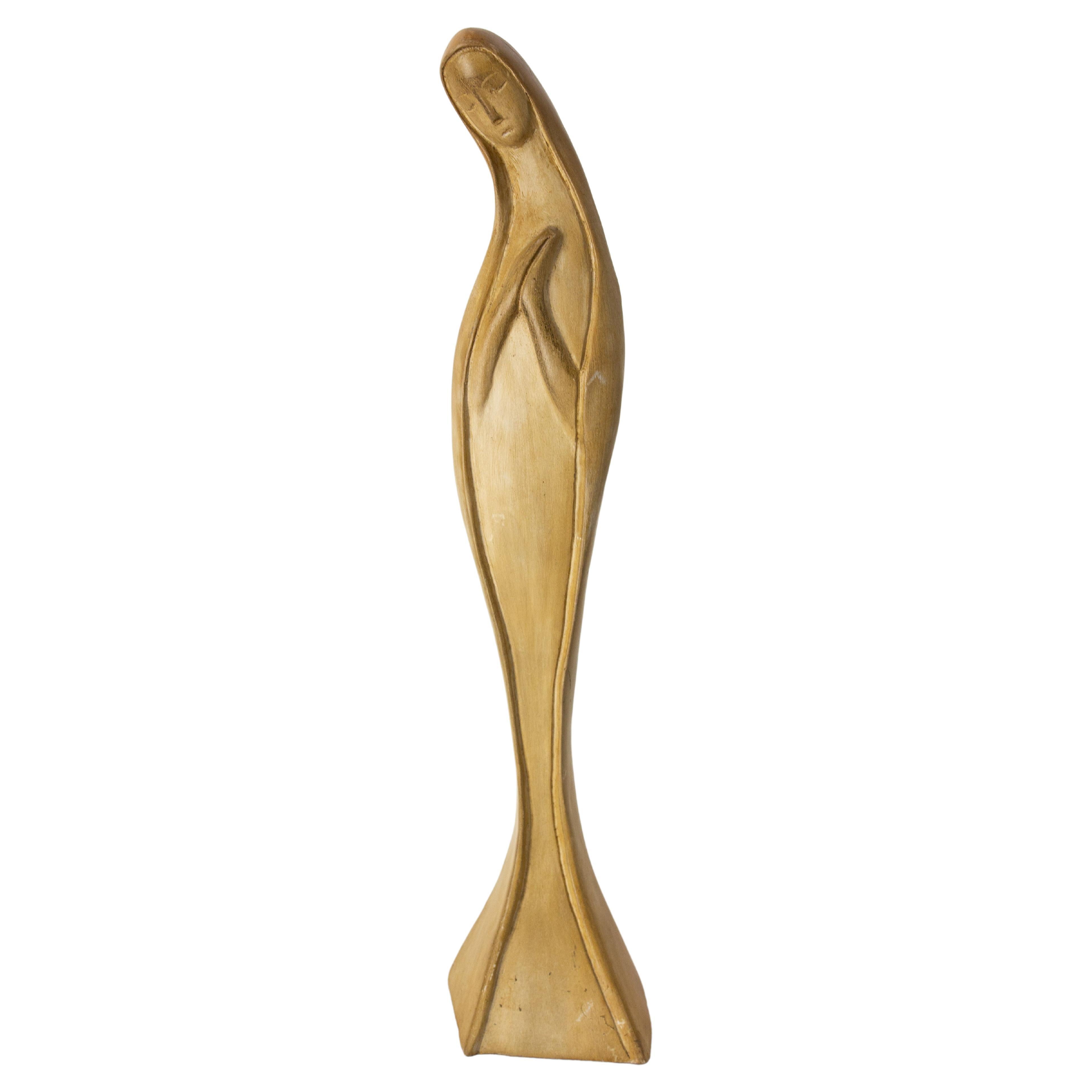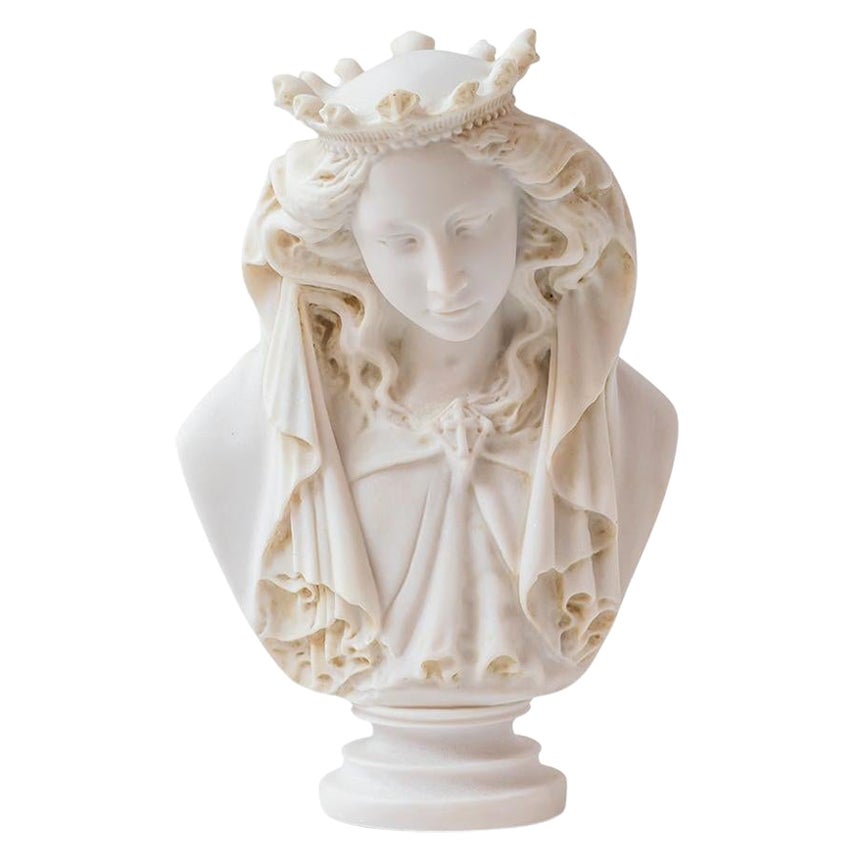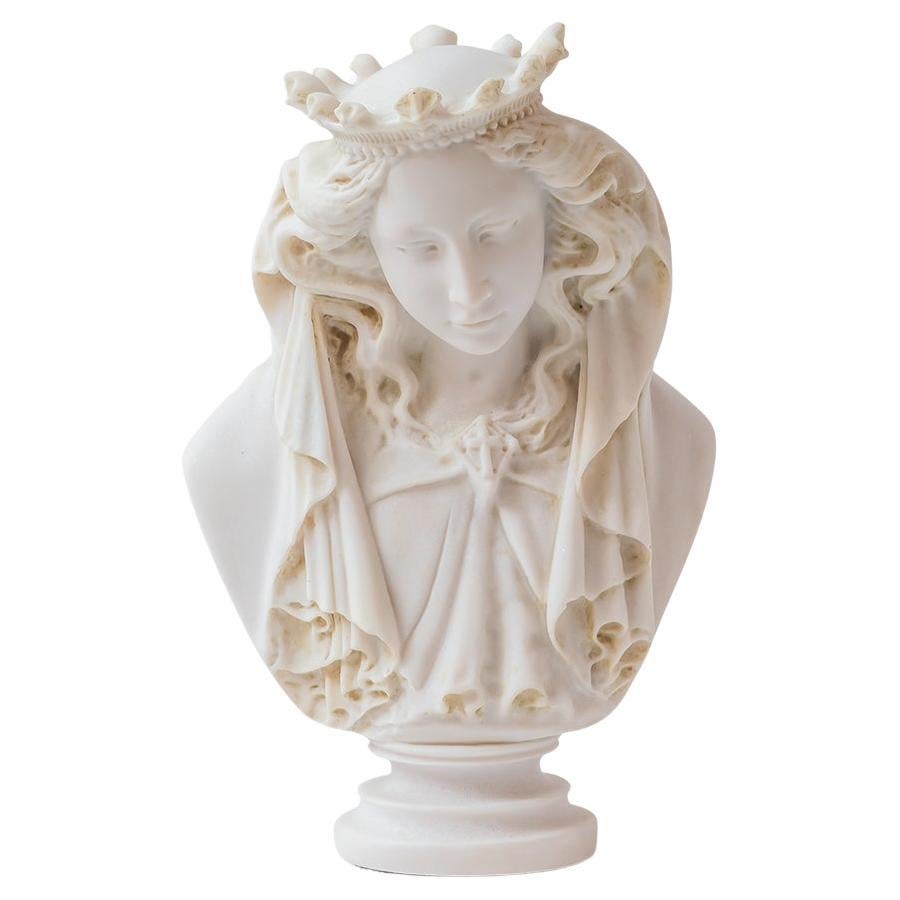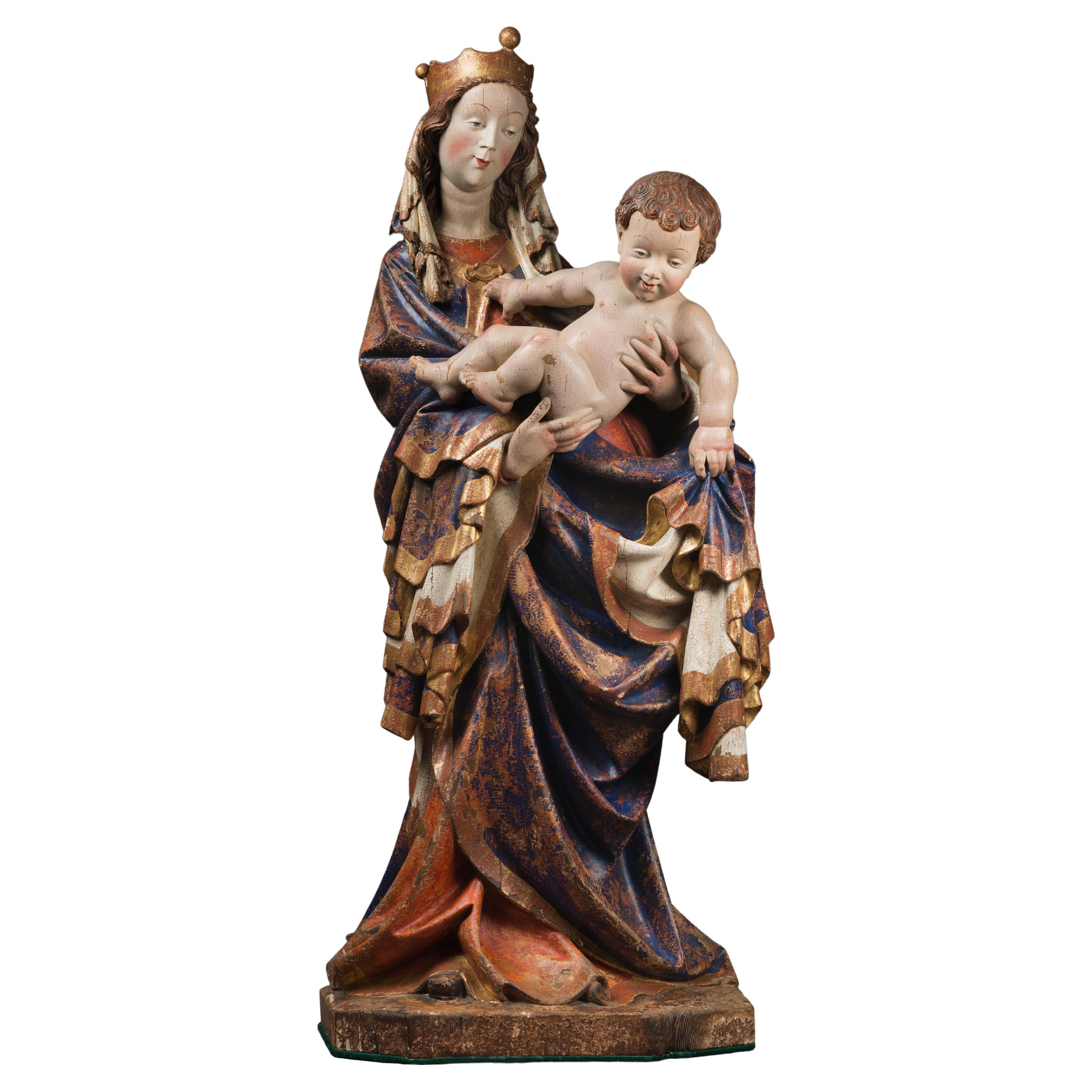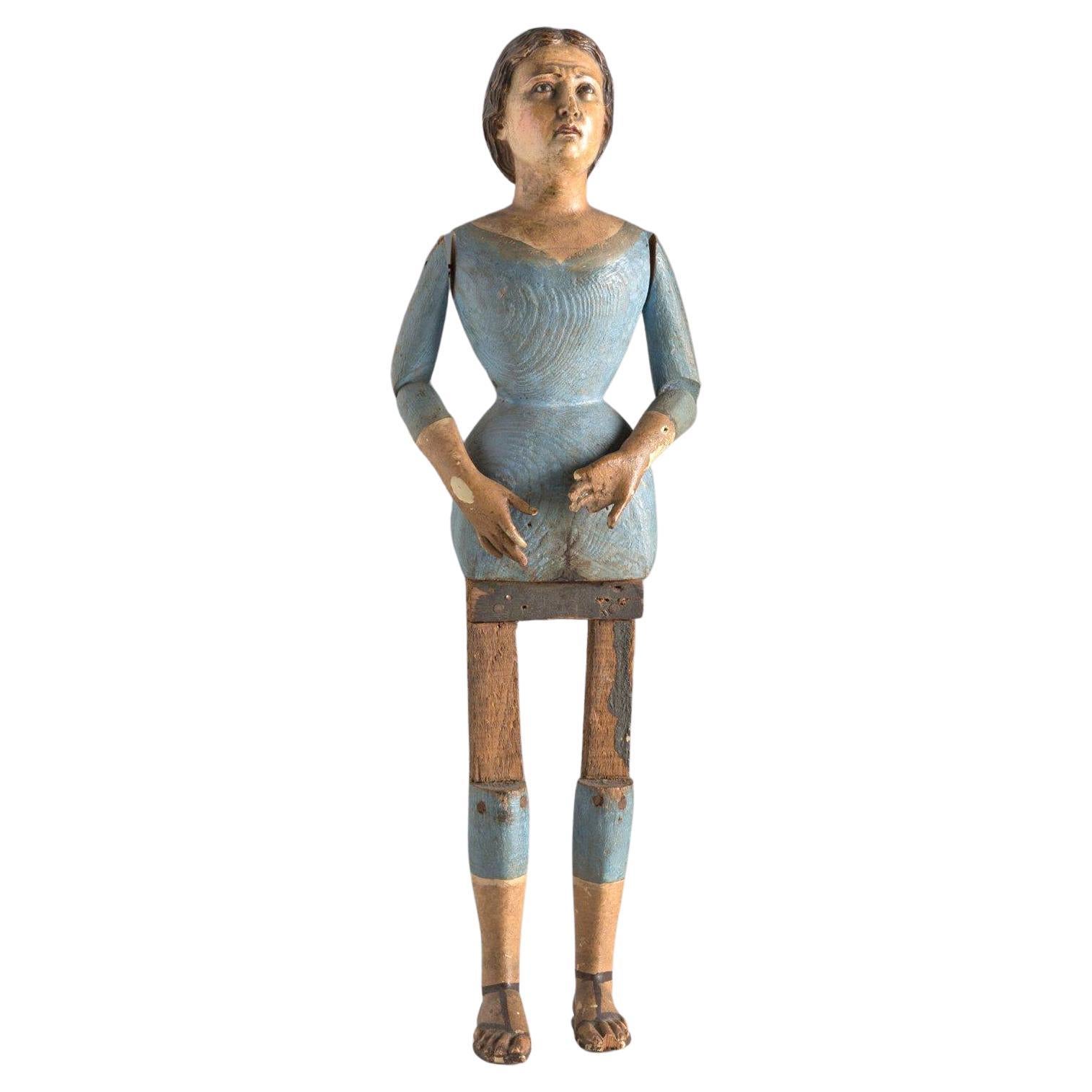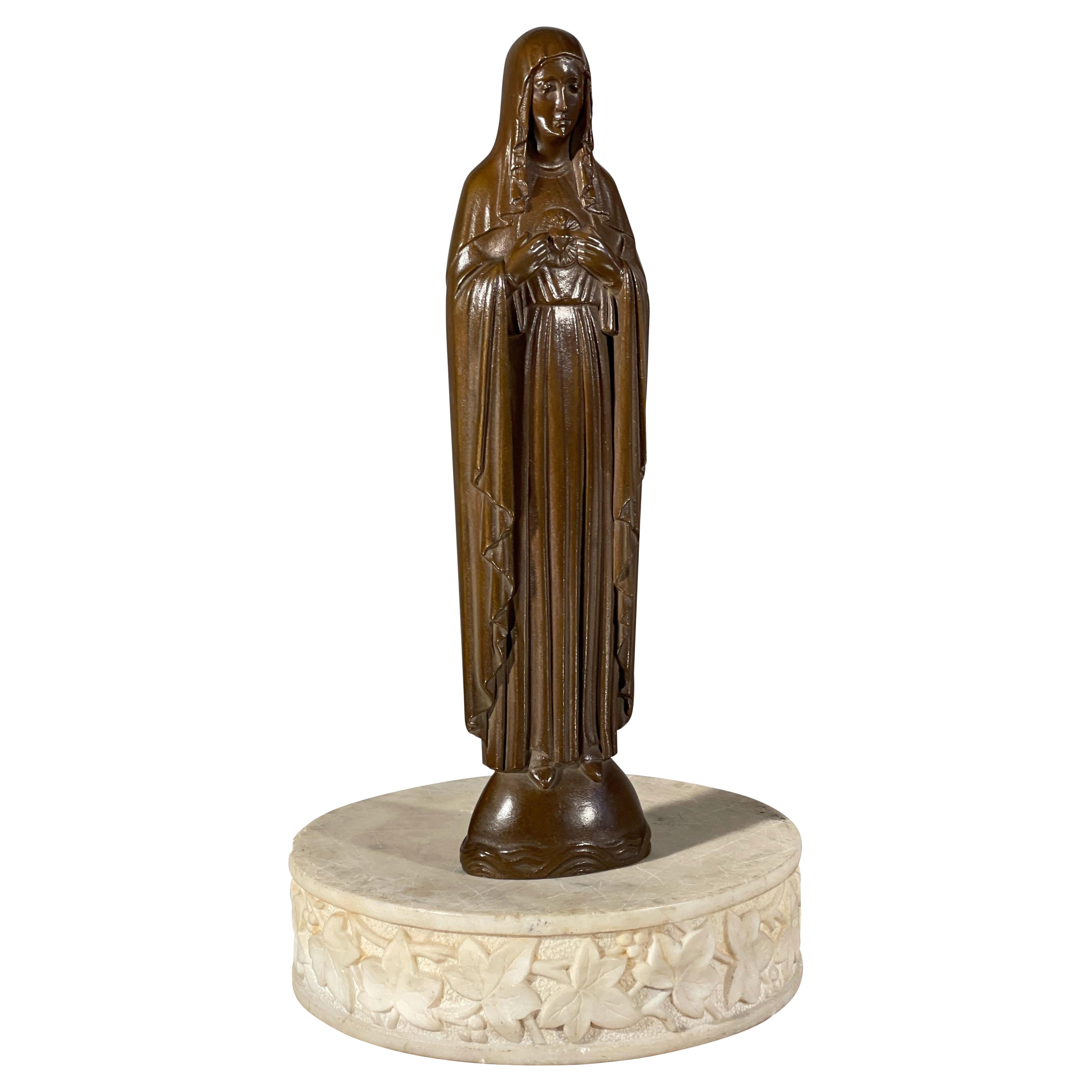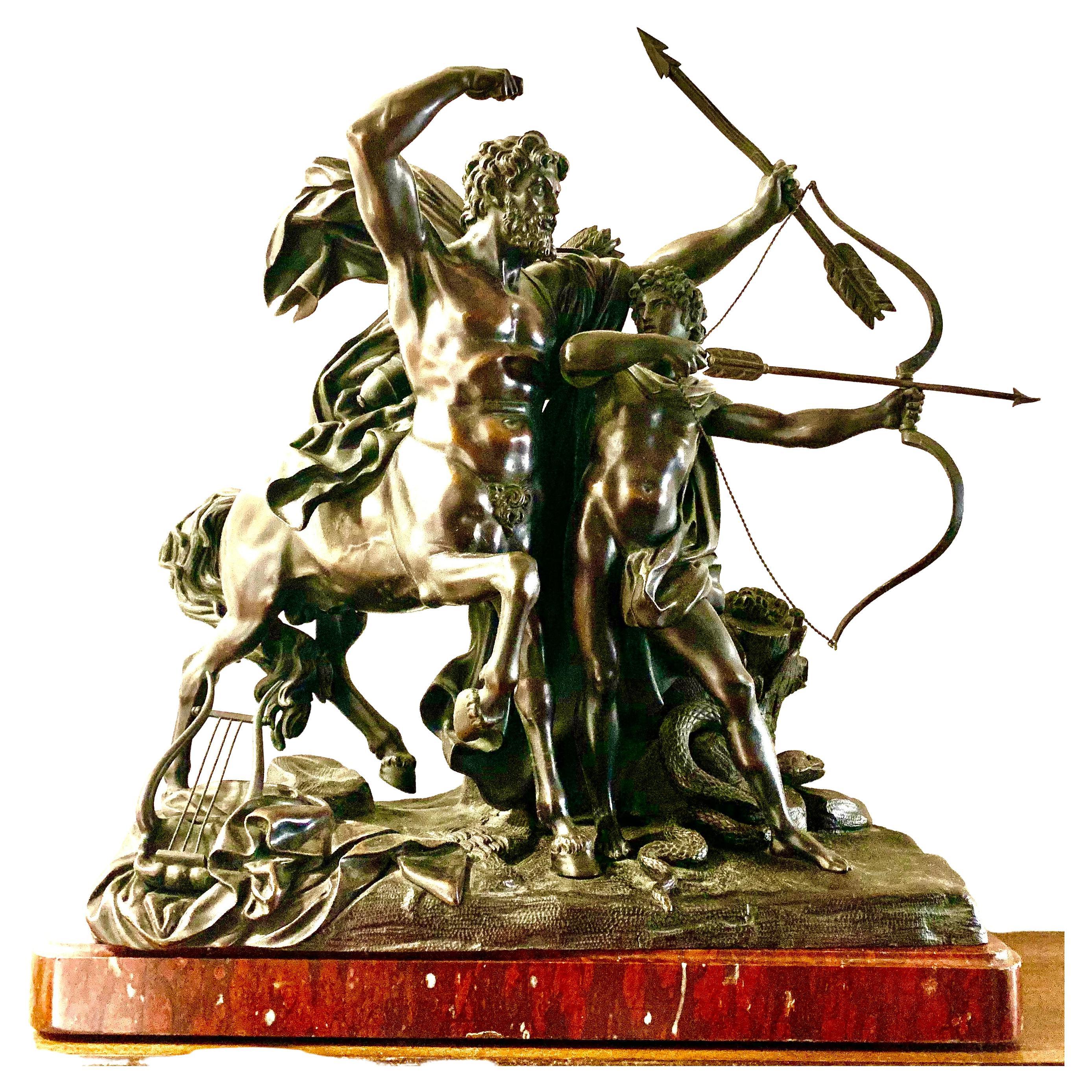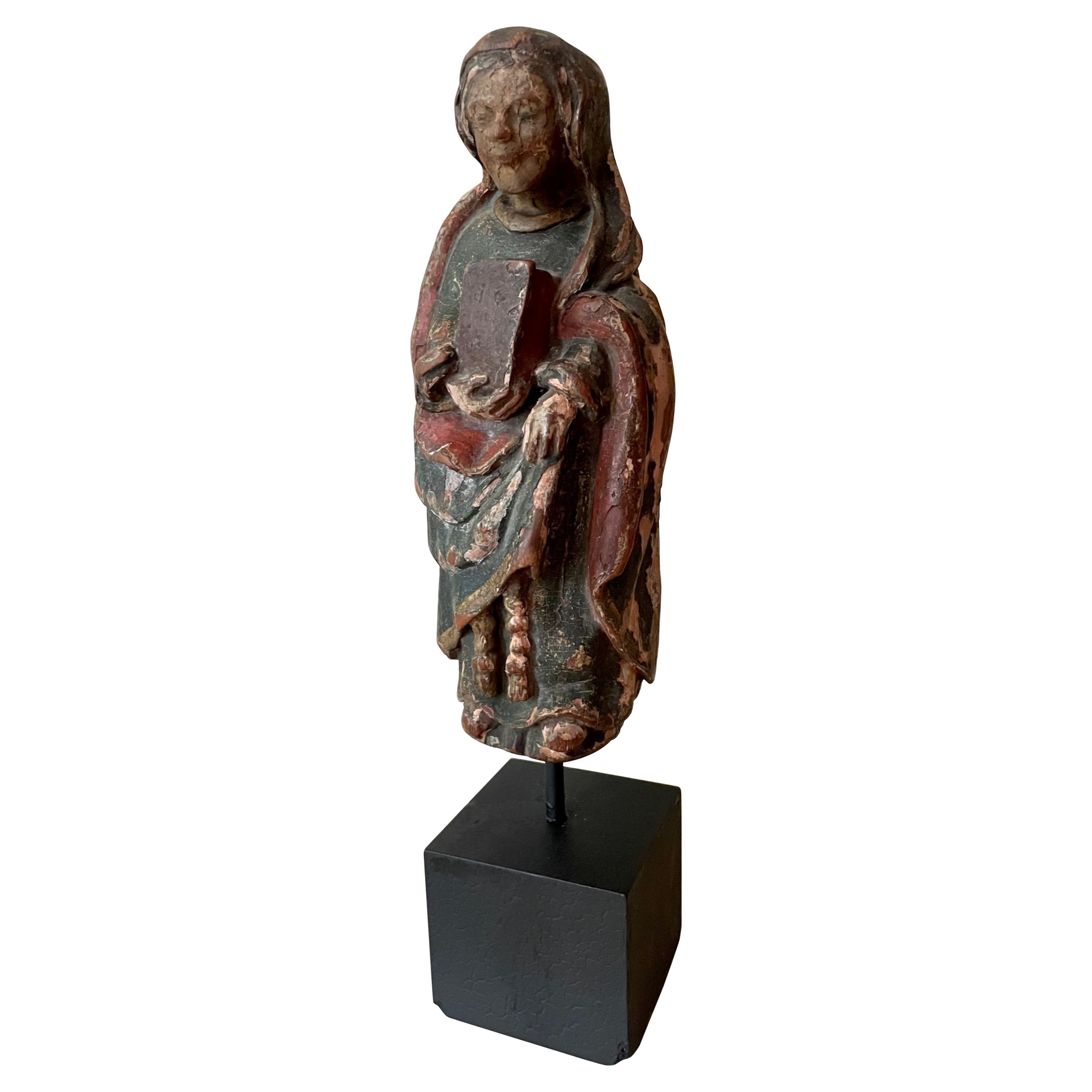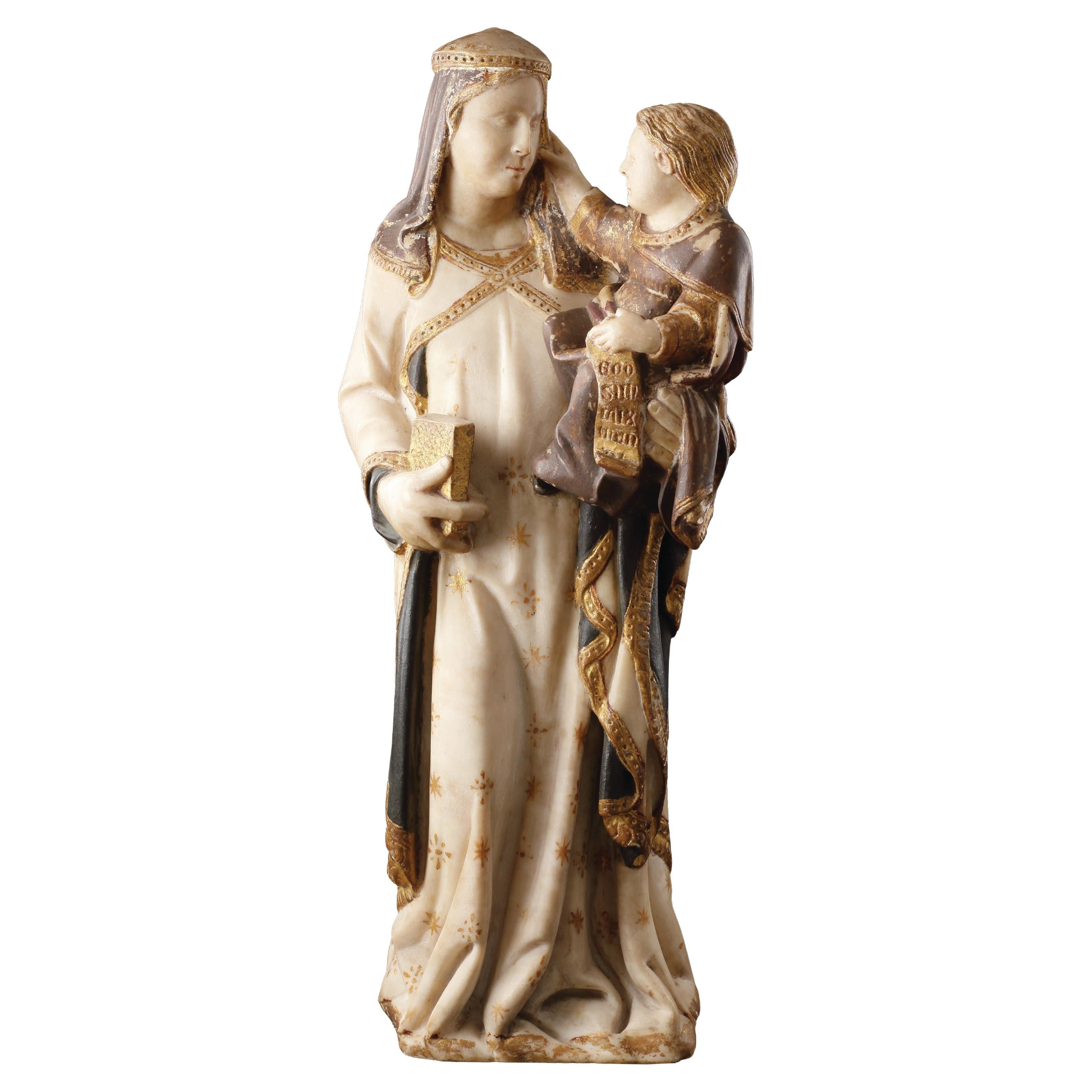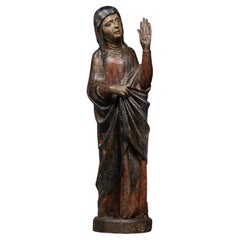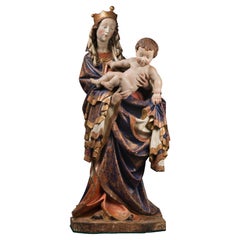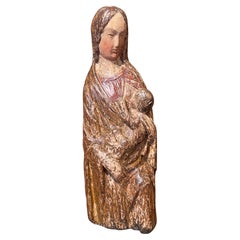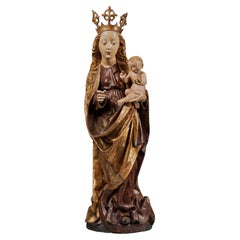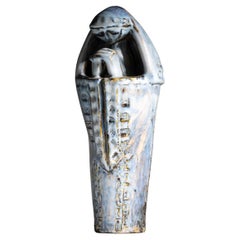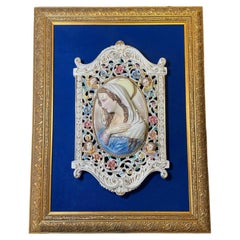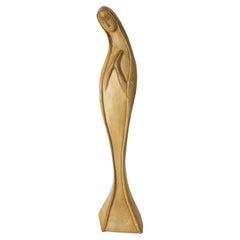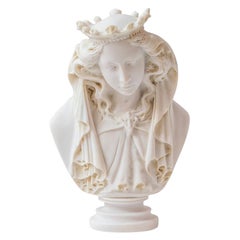
Education of the Virgin
View Similar Items
Want more images or videos?
Request additional images or videos from the seller
1 of 6
Education of the Virgin
About the Item
- Dimensions:Height: 43.31 in (110 cm)Width: 20.08 in (51 cm)Depth: 13.78 in (35 cm)
- Style:Renaissance (Of the Period)
- Materials and Techniques:
- Place of Origin:
- Period:
- Date of Manufacture:1510-1520
- Condition:Wear consistent with age and use.
- Seller Location:Saint-Ouen, FR
- Reference Number:Seller: 2611stDibs: LU3115341317092
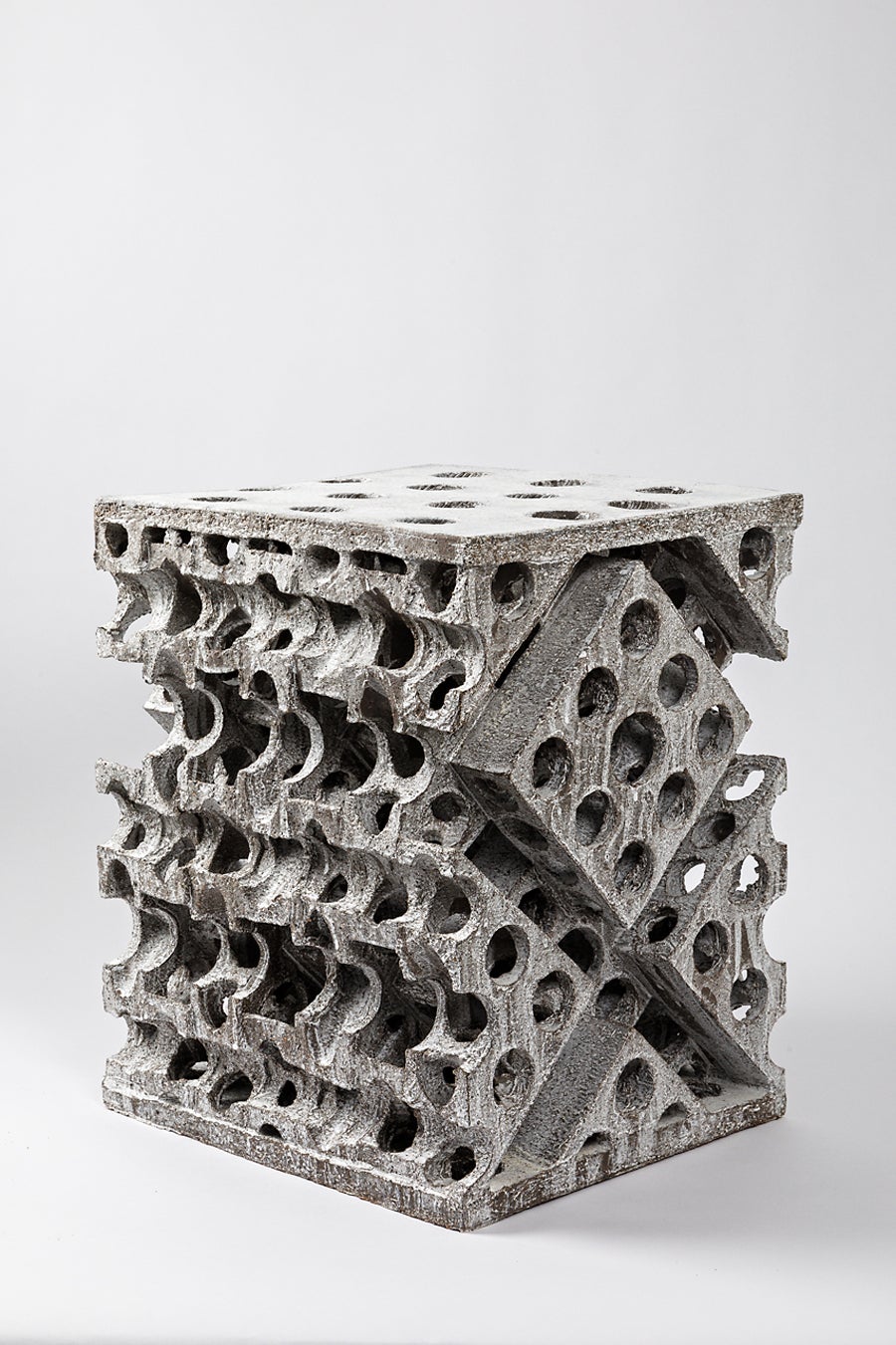
About the Seller
5.0
Vetted Professional Seller
Every seller passes strict standards for authenticity and reliability
Established in 2016
1stDibs seller since 2017
185 sales on 1stDibs
Typical response time: 4 hours
Authenticity Guarantee
In the unlikely event there’s an issue with an item’s authenticity, contact us within 1 year for a full refund. DetailsMoney-Back Guarantee
If your item is not as described, is damaged in transit, or does not arrive, contact us within 7 days for a full refund. Details24-Hour Cancellation
You have a 24-hour grace period in which to reconsider your purchase, with no questions asked.Vetted Professional Sellers
Our world-class sellers must adhere to strict standards for service and quality, maintaining the integrity of our listings.Price-Match Guarantee
If you find that a seller listed the same item for a lower price elsewhere, we’ll match it.Trusted Global Delivery
Our best-in-class carrier network provides specialized shipping options worldwide, including custom delivery.More From This Seller
View AllVirgin of Calvary
Located in Saint-Ouen, FR
VIRGIN OF CALVARY
ORIGIN : ITALY
PERIOD : SECOND HALF 13th CENTURY
Height : 75 cm
Length : 19 cm
Depth : 13 cm
Polychrome wood carved in the round
This rare sculpture of a Virgin of Calvary originally belonged to an ensemble depicting the Crucifixion. The Virgin would be accompanied by a sculpture of the apostle John, both flanking the Christ. Depictions of Joseph of Arimathea and Nicodemus could complete the ensemble.
The portrayal of the Descent from the Cross had to be a touching and moving scene for the viewer. Quite rare during the 10th and 11th centuries this particular scene of the Passion was very much in favour during the 12th century before other scenes took over in turn.
Mary is standing with her head slightly tilted to her right shoulder. In a gesture of intercession she raises her left hand – note the long and delicate fingers – towards the missing Christ while with her right hand she holds her cloak around her elbow. Those calm and restrained movements break with the hieratism of Romanesque sculpture...
Category
Antique 15th Century and Earlier Figurative Sculptures
Materials
Wood
$45,541
Exceptional Virgin with Child in the Style of Salzburg's Madonnas
Located in Saint-Ouen, FR
Exceptionnal polychrome wood virgin with child in the style of Salzburg’s Madonnas
Origin : Central Europe
Era : 19th century
Measures: height : 123...
Category
Antique 19th Century Figurative Sculptures
Materials
Wood
Rare Nursing Virgin from the 14th century
Located in Saint-Ouen, FR
RARE NURSING VIRGIN FROM THE 14TH CENTURY
ORIGIN : ITALY
PERIOD : 14TH CENTURY
Height : 60 cm
Width : 20,5 cm
Depth : 11 cm
Wood
Seated and in a very maternal position, Mary is wearing a red dress with a long, flowing cloak covering her narrow shoulders and falling down her body, with one side hugging her bust.
Her hair, half hidden under a veil, frames an oval face featuring a high forehead, a long and thin nose, a small mouth with thin lips and half-closed eyes.
Mary is carrying her son, the infant Jesus, who is wrapped in a cloak, in her lap. Jesus is being nursed by his mother, held by her left hand.
This remarkable depiction, imbued with such gentleness, is directly inspired by the iconographic theme of the Virgin and Child in Majesty. It breaks with the hieratic, impassive style of the models from the 12th and 13th centuries, adding a touch of realism. From Virgin Queen, Mary became Virgin Mother.
Linked to the development of the Marian cult, this type of representation, sometimes known as Virgo lactans, Virgin of Milk or Nurturing Virgin, remains extremely rare. This image of the Virgin Mary and the Infant Jesus is an extremely delicate representation of the intimate bond formed...
Category
Antique 15th Century and Earlier Italian Gothic Figurative Sculptures
Materials
Wood
Polychrome carved wood Virgin and Child from the 15th Century
Located in Saint-Ouen, FR
POLYCHROME CARVED WOOD VIRGIN AND CHILD FROM THE 15TH CENTURY
ORIGIN: SOUTH GERMANY, SWABIA, NUREMBERG REGION
PERIOD: 15th CENTURY
Height: 94,6cm
Width : 28 cm
Depth : 18 cm
Lime wood
Original Polychromy
Good state of conservation
From 1430 onwards, sculpture underwent a profound stylistic renewal which continued until 1530, the so-called late Gothic period. In the Germanic countries, original sculptures flourished in an expressive and sensitive vein.
This renewal was inspired by the art of Nicholas of Leiden, who was active in Strasbourg in the 1460's. His style broke with the refined and delicate art of the international Gothic style in force throughout Europe around 1400. The figures became more authentic and realistic. The bodies became denser. Clothes are animated by deep, broken folds, the fabrics are heavy and have a great decorative value. In addition, the polychromy is intended to be illusionistic. The painting makes it possible to restore the texture of the materials, the richness of the textiles and the natural skin tone of the characters.
The dissemination of images through engraving and the great mobility of the artists led to the success of this style, which conquered the Upper Rhine, Swabian, Tyrolean and Franconian regions, contributing to the formation of a common stylistic identity in these regions. The economic boom in the flourishing German cities was conducive to the development of original production. Attracted by this prosperity, numerous workshops were set up in order to meet the orders of religious communities, the Church and the laity, including a clientele of middle-class rockers.
This precious Virgin and Child is depicted standing on a crescent moon, her head encircled by a crown of tall flowers. Her long wavy hair spreads over her shoulders, framing her beautiful oval face. Under fine eyebrows drawn with a brushstroke, her almond-shaped, slightly drooping eyes look at the Child with infinite softness. She is dressed in a long red dress with a rounded neckline, belted under the chest. The heavy fabric of her dress spreads out in broken folds at her feet. On her shoulders she wears a golden cloak. The drapery has deep folds. She holds out her right hand while she holds the Christ Child with her left.
Christ, with his well-defined hair, is naked. His cheeks are highlighted with red, he holds an apple in his left hand and with the other hand makes a sign of blessing towards the faithful.
Virgins with Child on a crescent moon were very popular in the second half of the 15th century, especially as the central subject of altarpieces in southern Germany and Austria. The crescent moon on which Mary is standing is reminiscent of the Woman of the Apocalypse. Often equated with the Virgin Mary.
This episode is taken from the Book of Revelation (12:1-6)
1 Then a great sign appeared in heaven: a woman clothed with the sun, with the moon under her feet and a crown of twelve stars on her head. ; 2 She was pregnant, and she cried out because she was in labor, in pain from giving birth. ; 3 Then another sign appeared in heaven: it was a great fiery red dragon, with seven heads and ten horns, and seven royal crowns on his heads. ; 4 His tail swept down a third of heaven's stars and threw them to the earth. The dragon stood in front of the woman who was about to give birth so that when she gave birth, he might devour her child. ; 5 She gave birth to a son, a male child who is to rule all the nations with an iron rod. Her child was snatched up to God and his throne. ; 6 Then the woman fled into the desert, where God has prepared a place for her. There she will be taken care of for one thousand two hundred sixty days.
Some theologians see in this woman a reference to the Virgin Mary and in the child, Jesus.
This remarkable work is a very fine example of sculpture from Swabian workshops in the last decades of the 15th century. It presents all the characteristic stylistic elements: a highly girdled silhouette, an abundant drapery with angular folds, but also a great physical presence accentuated by the polychromy that restores the anatomical details. This group is made of a wooden log. The deep folds of the drapery highlight the movement of the Virgin holding the child.
Bibliography :
Sophie Guillot de Suduiraut, Dévotion et Séduction, Sculptures souabes des musées de France, vers 1460-1530, Paris musée du Louvre-Éditions somogy, 2015
“Revelation 12 - Common English Bible...
Category
Antique 15th Century and Earlier German Gothic Figurative Sculptures
Materials
Wood
Virgin and Child "Sedes Sapientiae", Seat of Holy Wisdom
Located in Saint-Ouen, FR
Virgin and child sedes sapientiae, seat of holy wisdom
Origin : Northern Spain, castile, navarre or galicia.
Period : early 13th century.
Heigh...
Category
Antique 15th Century and Earlier Figurative Sculptures
Materials
Wood
Virgin and Child in Majesty
Located in Saint-Ouen, FR
Virgin and child in majesty
Origine: castille
Epoque: early 14th century
Measures: Height: 72cm
Length: 30cm
Depth: 25cm
Polychrome and gi...
Category
Antique 15th Century and Earlier Figurative Sculptures
Materials
Wood
$39,848
You May Also Like
figurative ceramic of the Virgin unidentified artist
Located in Ternay, Auvergne-Rhône-Alpes
Small French figurative ceramic representing the Virgin praying. Very nice glazes in blue tones with yellow tips. Very nice vintage condition, signature of the artist under the ceram...
Category
Vintage 1950s French Mid-Century Modern Figurative Sculptures
Materials
Ceramic
Porcelain Plaque Of The Holy Virgin Mary
Located in Guaynabo, PR
This is a porcelain plaque of the Holy Virgin Mary. It depicts an oval shaped medallion adorned in the center by a high relief profile of the Virgin Mary. Around the medallion is pie...
Category
20th Century Unknown Rococo Mounted Objects
Materials
Porcelain
$480 Sale Price
20% Off
French Ceramic Statuette of the Praying Virgin, circa 1950
Located in Labrit, Landes
French ceramic statue.
The praying Virgin is depicted with curved, clean lines typical of mid-20th century Catholic art.
Good condition and nice patina
Shipping:
8.5 / 10 / 39 ...
Category
Vintage 1950s French Mid-Century Modern Animal Sculptures
Materials
Ceramic
The Virgin Mary Bust, 'Virgin Mary House' Replica Compressed Marble Powder No:2
By LAGU
Located in İSTANBUL, TR
This sculpture depicts the Virgin Mary, who is known as the mother of Jesus in Christian mythology. Weighing 1.5 kg, this sculpture is produced from pressed marble powder and made us...
Category
2010s Turkish Folk Art Busts
Materials
Statuary Marble
The Virgin Mary Bust, 'Virgin Mary House' Replica Compressed Marble Powder No:1
By LAGU
Located in İSTANBUL, TR
This sculpture depicts the Virgin Mary, who is known as the mother of Jesus in Christian mythology. Weighing 1.5 kg, this sculpture is produced from pressed marble powder and made using the original molds from the museum. It can be used both indoors and outdoors.
This work of art holds a special place for those interested in Christian art. The original depiction of the Virgin Mary makes it an excellent choice for art enthusiasts and collectors. Thanks to the high-quality material used in its production and the quality craftsmanship, it provides durability for many years. It can be used as a wonderful decorative piece in your garden, home, or office since it is suitable for both indoor and outdoor use. This Virgin Mary sculpture...
Category
2010s Turkish Classical Greek Busts
Materials
Statuary Marble
19th Century Articulated Wooden Figure of the Virgin Mary
Located in Leesburg, VA
19th century articulated wooden figure of the Virgin Mary
Anonymous
Spain; 19th century
Polychrome wood, inset glass eyes
Approximate size: 37 x 11 x 7 cm
An antique ‘Virgin...
Category
Antique 19th Century Primitive Figurative Sculptures
Materials
Glass, Wood, Paint
$2,363 Sale Price
24% Off
Recently Viewed
View AllMore Ways To Browse
Limestone Saints
Virgin Mary Clothing
Takis Vassilakis
Tennis Figurine
Terraco Draak
Testa Siciliana
Theophile Francois Somme
Theophile Somme
Thomas B Maracle
Tomasso Brothers
Toni Moretto
Triart Bassano
Ugo Cipriani On Sale
Uriano Cipriani
Valet Figurative Coat Rack
Verrocchio David
Vintage Boxing Dummy
Vintage Elf Figurine
